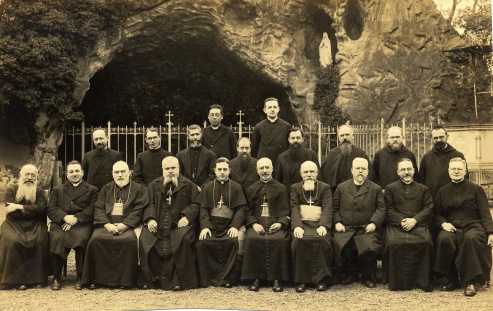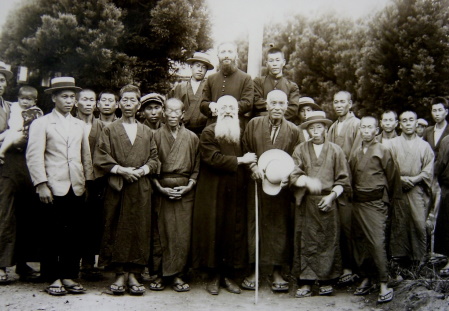We are suffering from a shortage of missionary personnel
1935 was a year of development for the Miyazaki-Oita Pastoral District.Miyazaki and Oita officially became pastoral districts,
with Fr. Cimatti as their parish priest, and thanks to the Salesian missionaries, many new mission fields were opened up.
A large church building was built in Oita City, and a small wooden church was built in Beppu City.
Father Cimatti established the Miyazaki Church as the center of his pastoral district, but he only spent a short time there.
He wrote a letter to his superior in Turin reporting the current missionary situation as follows:
"We have 50 people at the Miyazaki minor seminary, 100 elderly people at the Miyazaki relief home, 20 candidates for baptism in Nakatsu,
and also Miyazaki Church, Oita Church, and Nakatsu Church.
There are also many believers in Takanabe, Miyakonojo, and Tano, which have become missionary areas visited by priests.
In Tokyo, we have opened the Mikawashima Church, and in the Nerima area we have opened a novitiate and a publishing house.
We are suffering from a shortage of missionary personnel."
A parish priest who travels around Takanabe, Miyakonojo, and Tano City
As a result, Father Cimatti, who had just been appointed parish priest, became a traveling parish priest in Takanabe, Miyakonojo, and Tano City from 1935 to 1937.
In Miyakonojo and Tano City, church buildings and houses for priests had not yet been built.
The following words remain in the records of the Miyazaki Church:
"Rector Cimatti only comes to the office a short time each week. This is because he has to travel and care for the families of parishioners in Takanabe, Miyakonojo, and Tano."
Takanabe had a monastery and church that had been used by seminarians who had moved to Tokyo, and Father Cimatti was responsible for celebrating Sunday mass there.
At the time, Miyakonojo was a town with a large military presence. As several faithful families lived there,
Father Cimatti began to visit them every Saturday night to celebrate Mass, study catechesis, and make home visits.
In fact, Father Cimatti founded an organization called "Vincenzo a Paolo" in the town, which opened a free clinic for the poor.
A believer in Miyakonojo wrote the following about Father Cimatti:
"When there were big celebrations, the whole congregation would gather together, and Father Cimatti would give the sacrament of reconciliation,
celebrate Mass, and then speak.
The theme was God's mercy, trust in the Lord, and he called the Virgin Mary our tender mother.
He spoke like a father and was the epitome of kindness, patience and humility.
Afterwards, he came to our house, had tea with us, and then left immediately.
Father Cimatti was a special person who represented God to us."
Three Years on a Rock
Around 1930, several families began to move to Tano City from Nagasaki.
In a short time, the number of Christian families increased, but there were no priests to care for them.
The father of the Satowaki family went to Miyazaki and informed Father Cimatti about them.
As a result, from 1935 onwards, Father Cimatti, the parish priest, began spending many of his Sundays here.
At that time, Tano was a place with nothing. The distance from the station to the believers' village was three kilometers,
and there were fields, forests, and the believers' poor homes.
Let me borrow the words of one believer:
"When Father Cimatti arrived, the village children would greet him, touch his still-black beard, and cling to his cassock.
He would say, 'Bene bene,' and forgive them. Three years on a rock."
The words of Father Cimatti's successor remain.
"It's impossible to live in Tano City unless you're a priest who loves sacrifice."
Cimatti Museum Father Marsilio
May 6, 2022
Go to the index page of Father Cimatti's life
|

